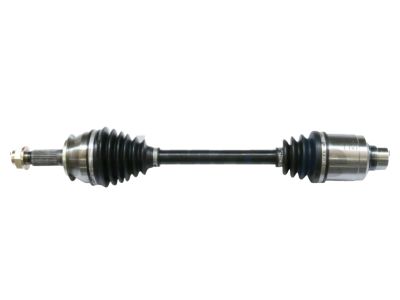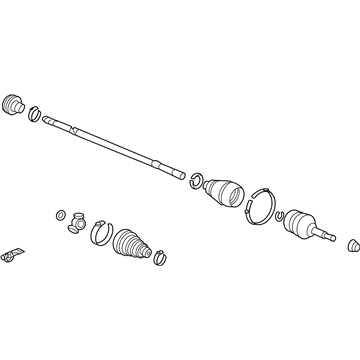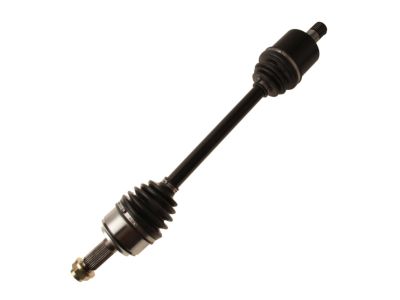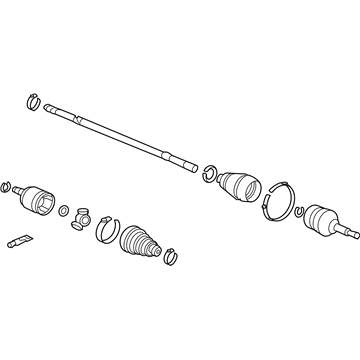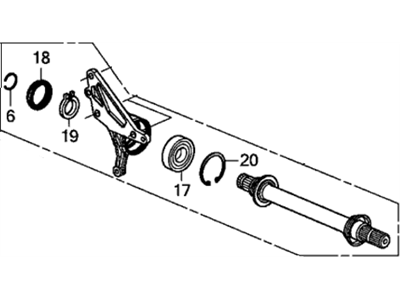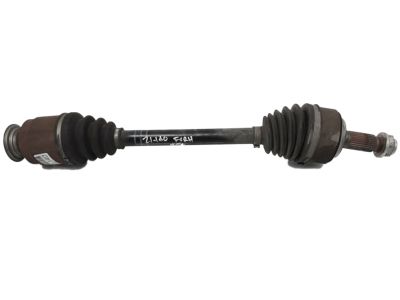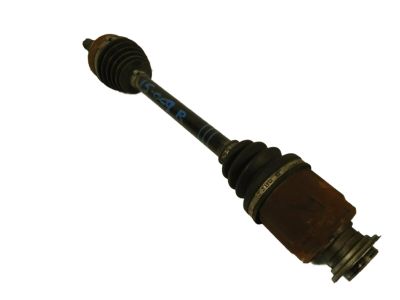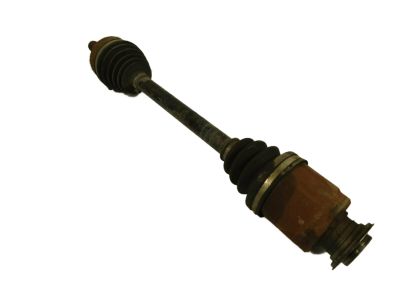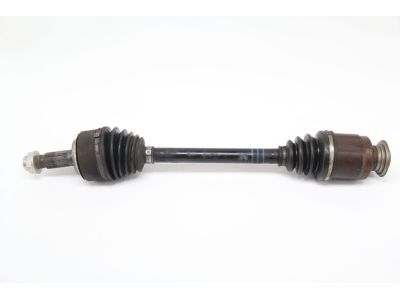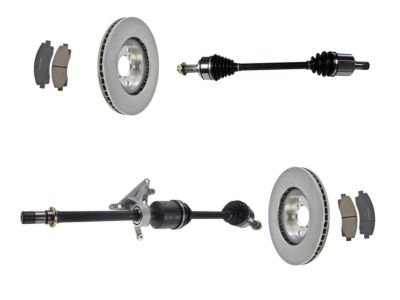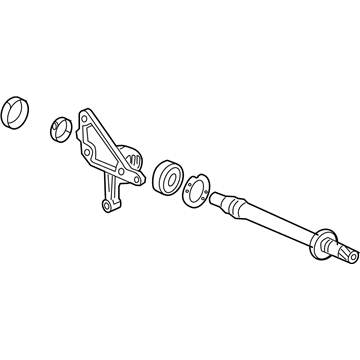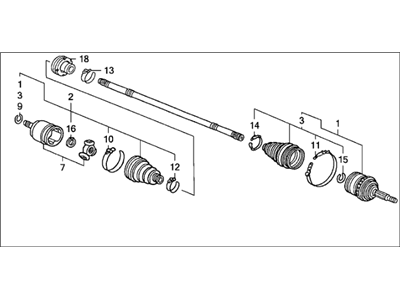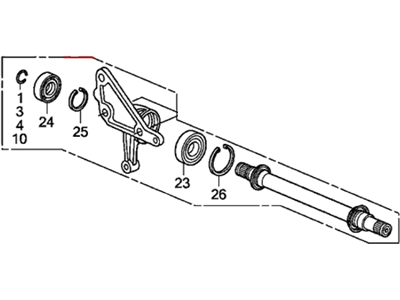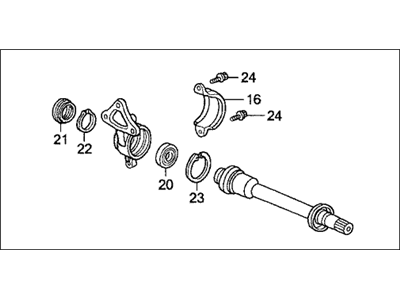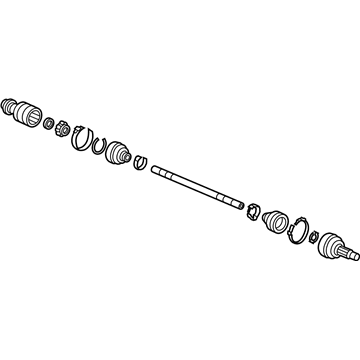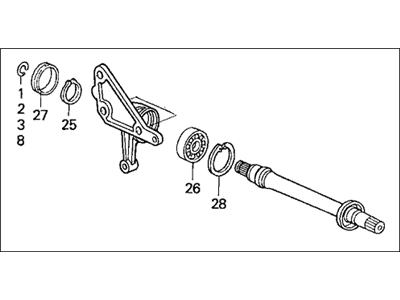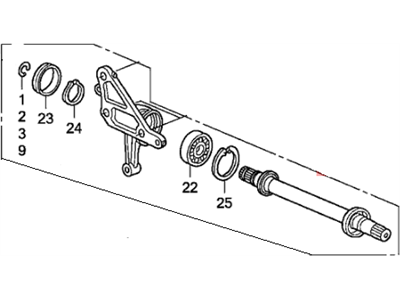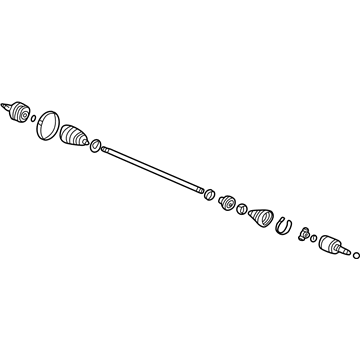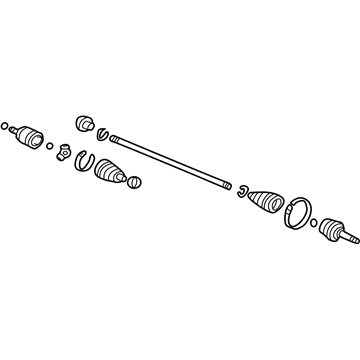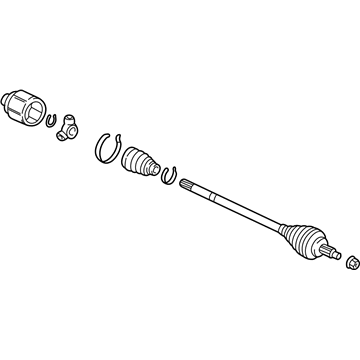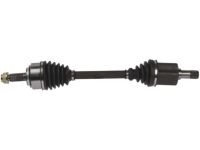×
- Hello
- Login or Register
- Quick Links
- Live Chat
- Track Order
- Parts Availability
- RMA
- Help Center
- Contact Us
- Shop for
- Acura Parts
- Acura Accessories

My Garage
My Account
Cart
Genuine Acura TL Axle Shaft
Car Axle Shaft- Select Vehicle by Model
- Select Vehicle by VIN
Select Vehicle by Model
orMake
Model
Year
Select Vehicle by VIN
For the most accurate results, select vehicle by your VIN (Vehicle Identification Number).
32 Axle Shafts found

Acura TL Passenger Side Driveshaft Assembly
Part Number: 44305-SEP-A02$439.56 MSRP: $627.77You Save: $188.21 (30%)
Acura TL Driver Side Driveshaft Assembly
Part Number: 44306-TK5-A52$245.69 MSRP: $350.88You Save: $105.19 (30%)Ships in 1-3 Business Days
Acura TL Passenger Side Driveshaft Assembly
Part Number: 44305-SDB-A00$787.55 MSRP: $1124.75You Save: $337.20 (30%)Ships in 1-3 Business Days
Acura TL Half Shaft Assembly
Part Number: 44500-STX-A10$624.09 MSRP: $891.30You Save: $267.21 (30%)Ships in 1-3 Business Days
Acura TL Front Drive-Cv Shaft Axle Assembly
Part Number: 44305-TK5-A00$185.19 MSRP: $264.48You Save: $79.29 (30%)Ships in 1-3 Business Days
Acura TL Passenger Axle Shaft Driveshaft
Part Number: 44305-TK4-A00$420.24 MSRP: $600.17You Save: $179.93 (30%)Ships in 1-3 Business Days
Acura TL Axle Assy
Part Number: 44305-TK5-A51$243.30 MSRP: $347.47You Save: $104.17 (30%)Ships in 1-3 Business Days
Acura TL Cv Intermediate Shaft
Part Number: 44500-TK5-A00$429.09 MSRP: $612.82You Save: $183.73 (30%)Ships in 1-3 Business DaysAcura TL Half Shaft Assembly
Part Number: 44500-S3V-A10$511.86 MSRP: $731.02You Save: $219.16 (30%)Ships in 1-3 Business DaysAcura TL Half Shaft Assembly
Part Number: 44500-S87-A00$423.96 MSRP: $605.48You Save: $181.52 (30%)Ships in 1-3 Business DaysAcura TL Drive shaft Assembly
Part Number: 42310-TK5-A02$215.38 MSRP: $307.60You Save: $92.22 (30%)Ships in 1-3 Business DaysAcura TL Half Shaft Assembly
Part Number: 44500-SDB-A00$550.10 MSRP: $785.63You Save: $235.53 (30%)Ships in 1-3 Business DaysAcura TL Half Shaft Assembly
Part Number: 44500-SJA-000$528.37 MSRP: $754.60You Save: $226.23 (30%)Ships in 1-3 Business DaysAcura TL Passenger Side Driveshaft Assembly (Reman)
Part Number: 44305-TK5-A00RM$186.77 MSRP: $264.48You Save: $77.71 (30%)Ships in 1-3 Business DaysAcura TL Passenger Side Driveshaft Assembly (Reman)
Part Number: 44305-TK5-A51RM$243.30 MSRP: $347.47You Save: $104.17 (30%)Ships in 1-3 Business DaysAcura TL Driver Side Driveshaft Assembly (Reman)
Part Number: 44306-TK5-A52RM$245.69 MSRP: $350.88You Save: $105.19 (30%)Ships in 1-3 Business Days


Acura TL Driver Side Driveshaft Set
Part Number: 44011-SZ3-A50$351.97 MSRP: $502.67You Save: $150.70 (30%)
| Page 1 of 2 |Next >
1-20 of 32 Results
Acura TL Axle Shaft
We provide a broad range of OEM Acura TL Axle Shaft at unbeatable prices on our website. For your OEM parts, You can count on the guaranteed quality, manufacturer's warranty, outstanding customer service, and prompt delivery. We look forward to your visit.
Acura TL Axle Shaft Parts Questions & Experts Answers
- Q: How do you remove and install a drive axle on Acura TL?A:To remove the axle shaft, first loosen the front wheel lug nuts, raise the vehicle, and support it securely on jack stands before removing the wheel. Unstake the axle shaft/hub nut using a punch or chisel, then loosen it with a large socket and breaker bar while wedging a pry bar between two wheel studs to prevent the hub from turning, and remove the nut, discarding it afterward. Next, remove the inner fender splash shield, then detach the damper fork from the lower control arm and shock absorber, separating the lower control arm from the steering knuckle. For right-side axle shaft removal, take out the front portion of the exhaust system. Swing the knuckle/hub assembly away from the vehicle until the axle shaft end is free of the hub, tapping the axle with a plastic hammer if the splines stick. Place a drain pan under the transaxle and pry the inner CV joint out using a large screwdriver or pry bar, supporting the CV joints as you carefully remove the axle shaft while keeping the inner CV joint horizontal to avoid damaging seals. For installation, pry off the old spring clip from the inner end of the axle shaft and install a new one, lubricating the differential or intermediate shaft seal with multi-purpose grease before raising the axle shaft into position. Insert the splined end of the inner CV joint into the differential side gear or intermediate shaft, ensuring the spring clip locks in place, then pull out on the inner CV joint housing to confirm secure seating. Apply a light coat of grease to the outer CV joint splines, pull out on the strut/steering knuckle assembly, and install the stub axle into the hub. Insert the steering knuckle ball joint stud into the lower control arm and tighten the nut, using a new cotter pin, then install the damper fork and stabilizer link to the lower control arm. Install a new axle shaft/hub nut, tightening it to the specified torque, and stake the collar of the nut into the slot in the axle shaft. Finally, install the wheel and lug nuts, lower the vehicle, tighten the lug nuts to the specified torque, and check the transaxle lubricant, adding as necessary to reach the appropriate level.
Related Acura TL Parts
Browse by Year
2014 Axle Shaft 2013 Axle Shaft 2012 Axle Shaft 2011 Axle Shaft 2010 Axle Shaft 2009 Axle Shaft 2008 Axle Shaft 2007 Axle Shaft 2006 Axle Shaft 2005 Axle Shaft 2004 Axle Shaft 2003 Axle Shaft 2002 Axle Shaft 2001 Axle Shaft 2000 Axle Shaft 1999 Axle Shaft 1998 Axle Shaft 1997 Axle Shaft 1996 Axle Shaft 1995 Axle Shaft
